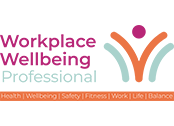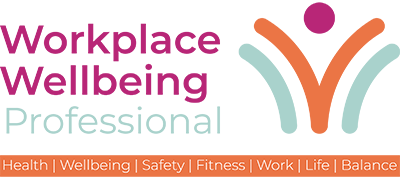A consultant I work with has a mug on his desk that reads “Do not mistake your Google search with my medical degree”. Harsh, but accurate.
The internet is a phenomenal thing, but it’s full of misinformation and outdated information. They say medical knowledge has a half-life of 10 years. That means that every 10 years, half of what we used to think was the cause of pain and disease and half of what we used to think was the best way to treat injuries and illnesses has been shown by the latest research work to be completely wrong. You only have to look at how our understanding of COVID increased and how treatment evolved to see how medical knowledge changes.
Anyone can put anything out on the internet and social media. Some inaccurate posts are from people whose knowledge is uninformed or outdated, and there are also some who make promises of quick fixes and pain cures, preying on vulnerable people to make money. Trust me, if these things worked, the NHS would have adopted them long ago.
Nowhere is this type of misinformation more prevalent than in the diagnosis and management of lower back pain. There is so much contradictory information out there that it can be difficult to know who to trust. My advice, this Back Care Awareness Week, is to direct people to NHS sites and groups like the Chartered Society of Physiotherapy, the Musculoskeletal Association of Chartered Physiotherapists and Versus Arthritis for the latest evidence informed advice.
Here are my top 10 myths I’ve come across during my career about back pain and the latest “mythbuster” evidence that I hope helps you in supporting employees who are dealing with back pain.
- A scan will show me what is wrong and how to fix it.
A great piece of research was done nine years ago where they scanned people from the ages of 20-80 with no back pain. What it showed was that people of all ages had things like disc bulges and inflamed joints, meaning that seeing something on a scan doesn’t mean it is the reason why someone has back pain. Nowadays, we only scan people if we are concerned that there is something nasty going on.
- My back is damaged, and I need to rest.
All our joints, including our spines, need movement to stay healthy. Movement helps keep our joints lubricated and keeps the blood circulating to these tissues. People with back pain should not avoid movement but should do what feels comfortable.
- Movement is bad — it leads to wear and tear.
Equally, there is no evidence that movement — including lots of it, like regular running or tennis — causes wear and tear or damages joints in our back. Our spines are strong and the muscles that support our spines are great shock absorbers that protect the joints. Marathon runners have no more degeneration in their spines than us mere mortals.
- I have to fix my posture.
There’s no such thing as good, bad or perfect posture. Research now shows that the most important thing is changing our posture regularly. So if your teams spend long periods sitting, they should be encouraged to change the way they sit regularly and get up and move around, and even slouching is OK for a period of time.
- I need work to get me an ergonomic chair.
No one should be sitting rigidly upright these days. Gone are the days where we dictated how people should sit at a desk, telling them that they need a certain chair set up in a certain way. What people need to be is comfortable and this is what you should use as a guide regarding suitable chairs. By all means have a range of chairs and desks at different heights for people to try out and see what works for them, but don’t have a one-size-fits-all approach to the perfect ergonomic chair.
- I must avoid painkillers as they may block the pain and so I do more harm.
What we call painkillers, like paracetamol and ibuprofen, aren’t really that, and nor are the prescription ones given by doctors. They don’t anaesthetise the area but work by reducing inflammation. When people initially develop back pain, taking these sorts of drugs can make it easier for them to move, which is essential for getting better. So they should be encouraged to do this for a short period of time if they’ve been advised to by a medical professional. Long-standing back pain is another thing. It’s rarely appropriate to take painkillers for ongoing pain.
- I need to strengthen my core.
Core strength was seen as the answer to back pain 30 years ago, so everyone jumped on the bandwagon, both in the medical profession and fitness industry, and the original research was completely distorted. As a result, we turned people into rigid robots, too afraid to move without tightening their core. More recent research has shown that all muscles are important and that we need a muscle system in balance where muscles switch both on and off and where flexibility is as important as strength. Providing a variety of exercise classes or options in the work environment reinforces the message that all types of movement and activity are good.
- Bending my back is bad for me.
Movement is essential to keep our spines healthy, and that means a full range of movement. We should be able to touch our toes. Bending forwards stretches out our back muscles and opens up the joints in our back, changing the pressure on joints and ligaments. We shouldn’t force the movement but do what feels comfortable. Equally, bending our backs when we lift is OK, as long as it feels comfortable. Encourage people to listen to their bodies when deciding how best to move, instead of the latest trend on social media.
- Age is associated with degeneration.
As a 50-something-year-old woman, I know there are many downsides to getting older, but just like wrinkles and the need to wear glasses, changes on a scan are merely normal age changes and not degeneration or wear and tear. In the same way that wrinkles don’t mean there’s anything dangerous about our skin, changes seen on a scan are now considered normal and are not a cause for concern. We all have them.
- Pain equals tissue damage.
One of the areas where research has developed most in recent years is in our understanding of what causes pain and why we experience it. We now know for certain that pain is not equivalent to tissue damage. Some people have terrible injuries (think soldiers during wartime or ballet dancers injured while performing) and yet feel no pain. Equally, some people have no tissue damage and yet have terrible pain. The best example of this is someone with an amputated body part who experiences terrible pain in a limb that is not even there — what we call phantom limb pain.
We now understand how and why pain works like this. The key message is that pain is protective, but it’s influenced by lots of factors, including mood, sleep and diet, and very much by stress. In dealing with back pain, everyone should be encouraged to keep moving, knowing that even if the movement hurts, it’s not doing them any harm, and they’re not doing more damage.
Claire Small
Claire is a Consultant Physiotherapist and the Chief Clinical Officer and co-founder of Pure Sports Medicine. As co-founder she has been with Pure Sports Medicine since its beginning in 2003, delivering outstanding clinical care for over 20 years.
Claire’s clinical specialities include issues of the spine, hip, groin and pelvis including persistent problems, pregnancy-related complaints and movement dysfunction. She has a specific interest in helping women manage the symptoms associated with menopause and metabolic syndrome.
As an accomplished and well-established clinician, speaker and researcher, Claire is also an Honorary Lecturer and Examiner at Queen Mary University of London and the University of Hertfordshire, an invited Lecturer at UCL, Kings College, London & University of Bath and a Journal Reviewer for Manual Therapy and Physical Therapy in Sport & the British Journal of Sport Medicine. She was made a Fellow of the Musculoskeletal Association of Chartered Physiotherapists in 2016.
In 2015 she was named Australian Businesswoman of the Year in the UK for her work in healthcare.



